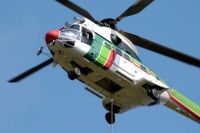Responding to Christine Negroni’s December 1 Huffington Post article on helicopter medical evacuation, I submit the following: For a short but interesting period, I was a helicopter pilot for an EMS operation in California. Much of our business was related to off-road recreational vehicle accidents, often in rugged terrain. We would be called and responded […]
Helicopter Safety
 Helicopters are useful machines that perform almost every function in aviation: they transport passengers, serve as flight ambulances, perform agricultural work, are used in sight-seeing tours, aid in law enforcement, and conduct military operations. This is possible because of their great versatility: they can fly forwards, backwards, hover, descend and ascend vertically, and land and takeoff without runways.
Helicopters are useful machines that perform almost every function in aviation: they transport passengers, serve as flight ambulances, perform agricultural work, are used in sight-seeing tours, aid in law enforcement, and conduct military operations. This is possible because of their great versatility: they can fly forwards, backwards, hover, descend and ascend vertically, and land and takeoff without runways.
The benefits of helicopters come with great burdens: they are intricate, complex machines that require the highest levels of design, construction, maintenance and operational skill. If any one of these components is absent, the results are usually disastrous for its occupants and their families. What was designed to help humans with their daily lives all too often causes great harm to those who use them. Although the helicopter industry has made great efforts at reducing helicopter accidents, they continue. Why?
